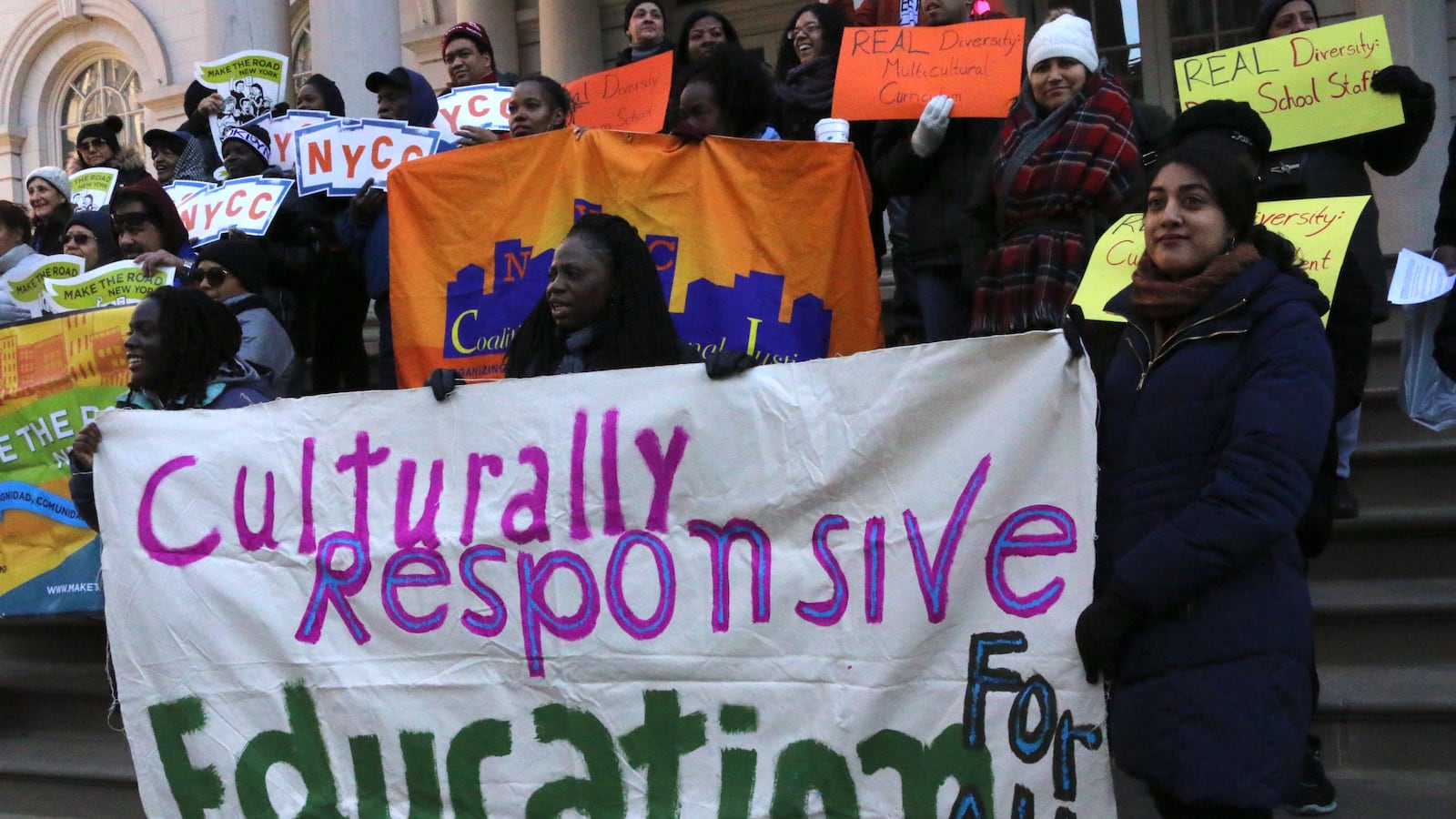Students at Sunset Park High School walked out of class recently to protest the removal of a classmate’s artwork that echoes what some at the predominantly black and Hispanic school feel: That police brutality is a problem in communities of color.
In the piece, a black girl wields a spray paint can to turn a racist message into one of hope. “Bigger than hate,” she scrawls over an epithet. But in the background, a white police officer crouches with his gun drawn.
Based off a piece by a pair of professional artists, the poster was part of a week of action for Black Lives Matter at School, a national series of workshops, actions and community conversations centered around the civil rights movement. Hundreds of New York City teachers brought the social movement to their classrooms last week, leading discussions about racial justice and pushing their administrators to adopt culturally sensitive practices.
The events culminate Tuesday with a rally at the education department headquarters.
“This is our modern day civil rights movement, so it’s important we teach it,” said Rosie Frascella, a Brooklyn high school teacher who helped organize events citywide.
But as the Sunset Park protest illustrates, acknowledging racism in the classroom can be treacherous ground for school leaders and teachers. The painting generated controversy after someone posted a photo of it on Facebook, along with the school’s number and an invitation to call in protest. A teacher there said it is no longer on display, despite reports that it was relocated elsewhere in the building.
The week of action comes amid a grassroots movement to integrate New York City schools, which are among the most segregated in the nation. Some activists and educators say that movement cannot succeed unless teachers are trained in having tough, honest conversations with students, and have reflected on these issues themselves.
A spate of racially charged incidents in city schools highlights the consequences when that doesn’t happen in a system where 70 percent of students are black or Hispanic, and a majority of teachers are white.
In the past few weeks, the New York Daily News has reported on a Bronx teacher who stepped on the backs of black children during a lesson about slavery; a white principal who was accused of forbidding lessons on the Harlem Renaissance; and a Brooklyn elementary school PTA president who advertised a fundraiser with pictures featuring performers in blackface.
“All of this is just further evidence of a systemic problem in New York City,” said Natasha Capers, a coordinator for the parent-led group Coalition for Educational Justice. “Systemic problems call for systemic solutions.”
In another show of how difficult the work can be, the United Federation of Teachers recently declined to endorse Black Lives Matter week of action. Organizers say it is the only union do so, out of 10 cities where resolutions were proposed.
An education department spokesman said the city has built racial equity into its principal training programs and has provided a new social studies curriculum that includes “multiple perspectives and voices.” The city has also led anti-bias training for 450 teachers — out of more than 70,000 total — while individual schools and district leaders have done similar work on their own.
“Anti-bias training and culturally responsive teaching are critical to ensuring a welcoming learning environment for all students,” spokesman Will Mantell wrote in an email. “These approaches are integrated throughout New York City schools.”
Frascella, an English teacher at International High School in Prospect Heights, said it’s impossible to ignore the experiences her students bring to the classroom. The network that her school belongs to caters to immigrant students, many of whom have been affected by the rancor surrounding the federal immigration debate.
“They come to us with questions. They’re trying to understand the world they live in,” she said. “We put our students first. We honor their experience and their voices.”
At her school, students threw a party in honor of black lives, hosted a fashion show and raised money for the Black Alliance for Just Immigration. Frascella said Black Lives Matter helps teachers navigate the complexities through resources like lesson plans. In New York City, teachers held a curriculum fair and acted out demo lessons.
“What we’ve been trying to do is creating spaces for teachers to have those conversations so they feel more confident in their teaching and supported,” she said.

